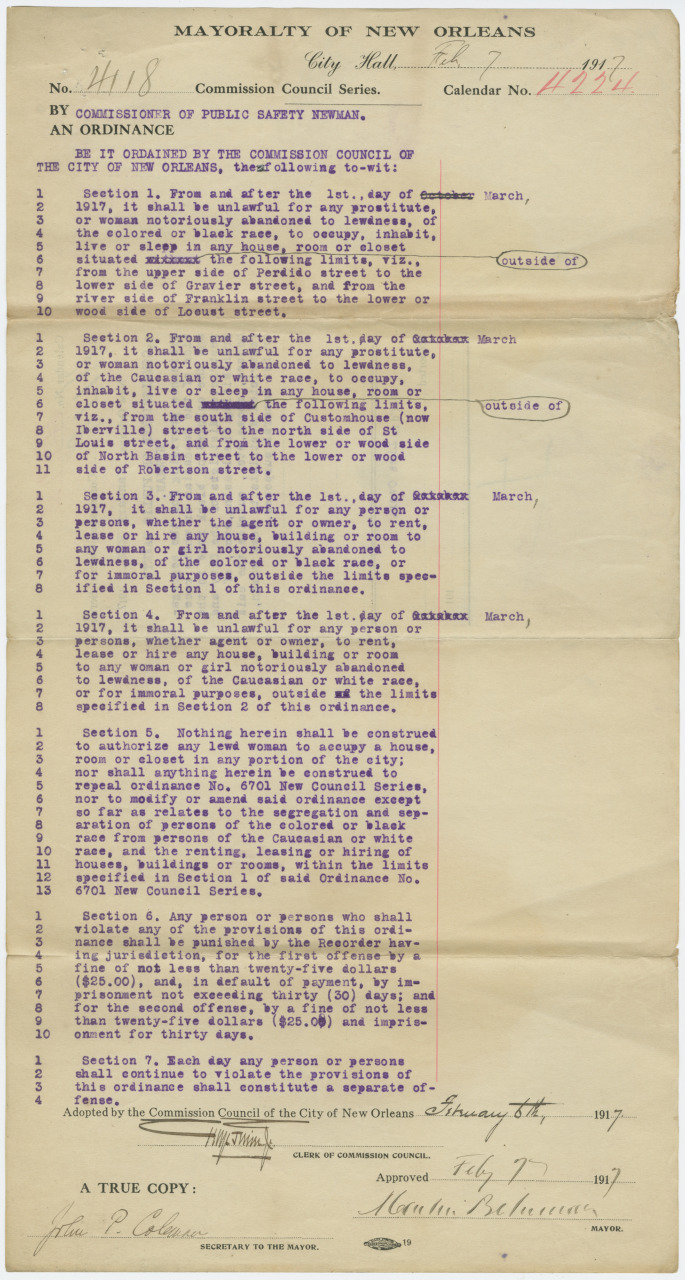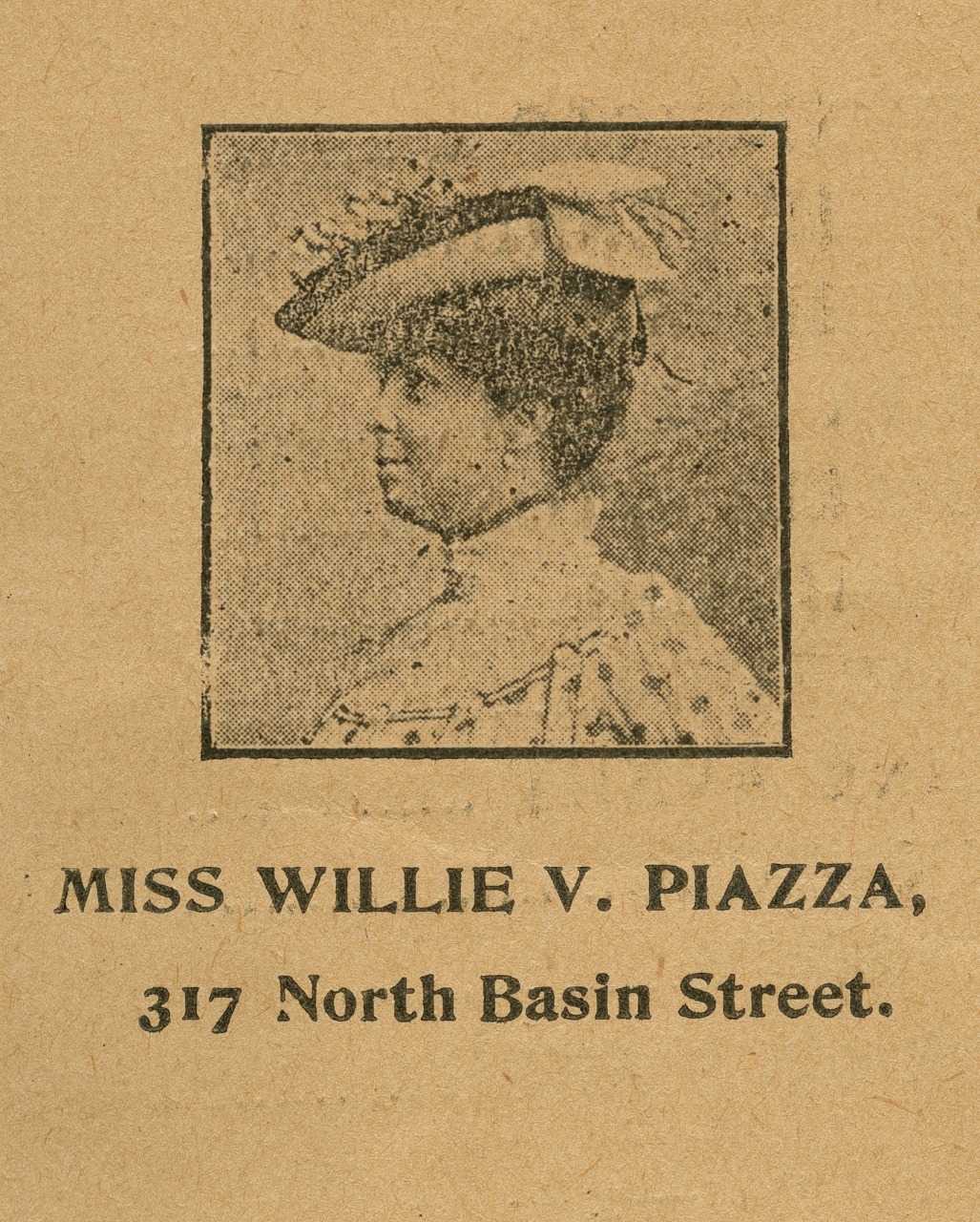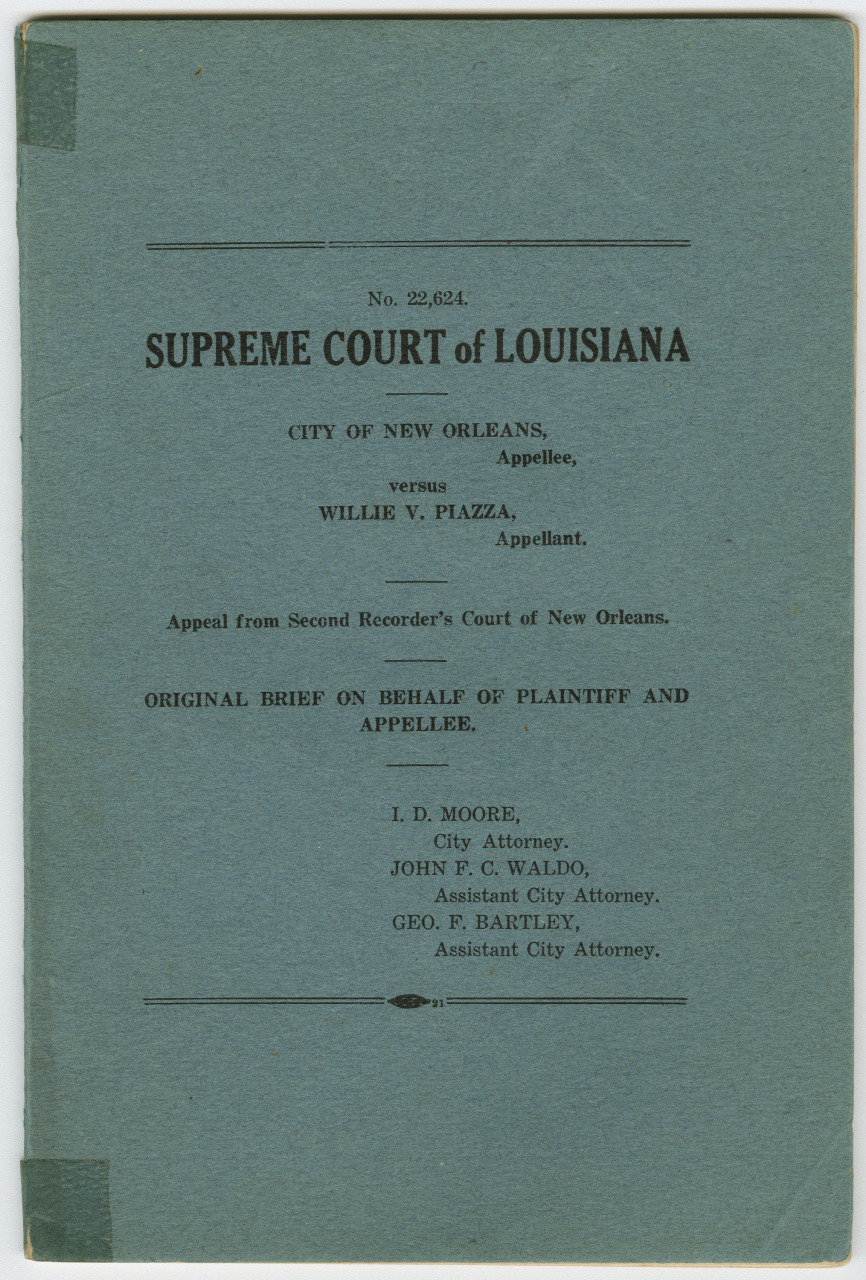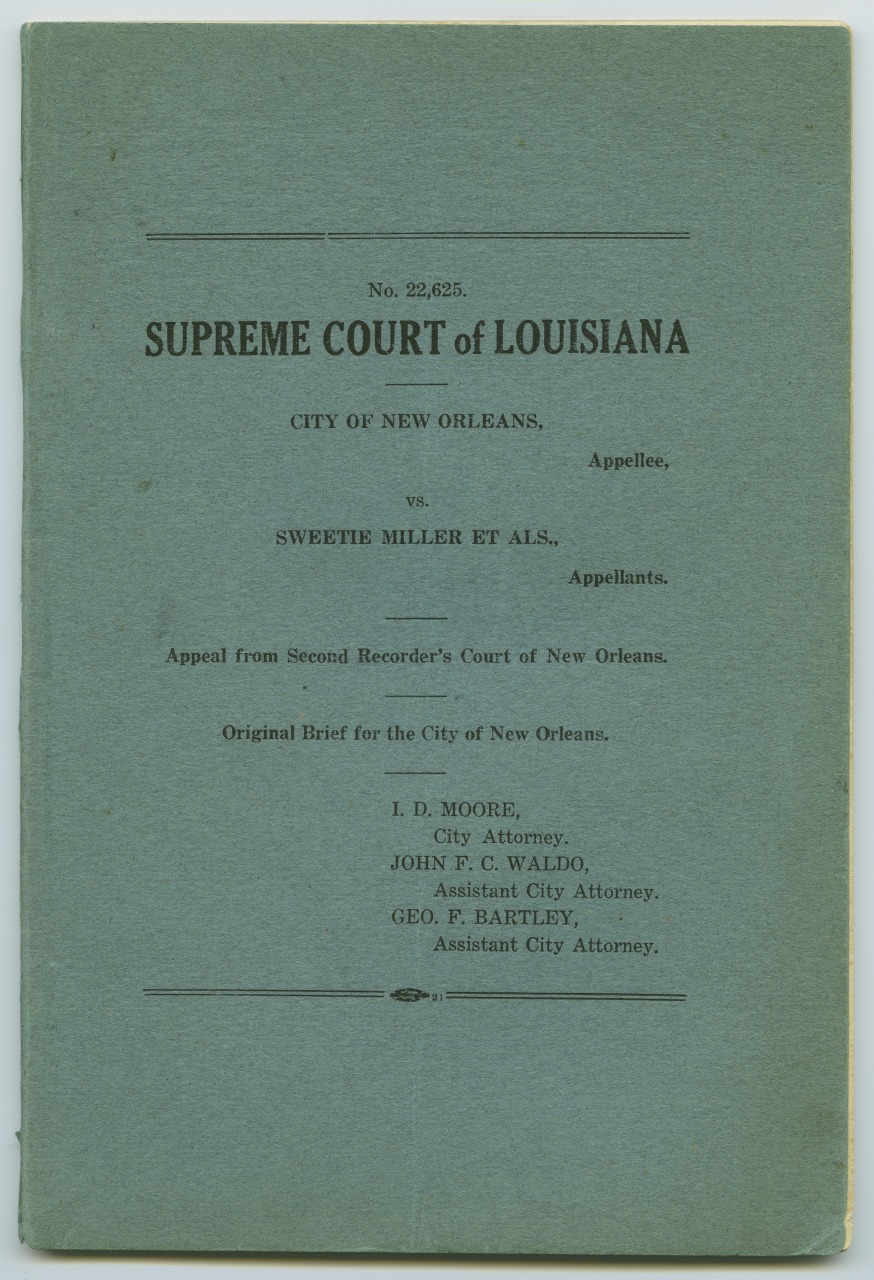Although the boundaries of a separate red-light district catering to African American men were defined in the original ordinance establishing Storyville, the provision was not included in the final ordinance that was enacted. The area known as Uptown, or Black, Storyville operated quasi-legally for most of the Storyville years. An ordinance passed in February 1917, only months before all prostitution in New Orleans was made illegal, reinstated recognition of the African American red-light district, in an attempt to racially segregate all prostitution.
The ordinance required the removal of all sex workers of African descent from the most established and lucrative portions of Storyville to the much less profitable Uptown section. In response to the measure, a number of women of color—led by "the Countess" Willie Piazza, a prominent brothel operator with businesses on Basin St.—challenged the legality of the ordinance in court. The case was eventually heard by the Louisiana Supreme Court, who ruled in favor of the women. The landmark ruling represents an early legal victory against legislation requiring segregation on the basis of race.

City ordinance restricting prostitution by women of color to the district bound by Perdido, Gravier, S. Franklin, and Locust Streets
February 7, 1917
by the Commission Council of the City of New Orleans and the Mayoralty of New Orleans
courtesy of Louisiana Division / City Archives, New Orleans Public Library

Willie V. Piazza
from Sporting Guide, of the Tenderloin Distrct [sic] of New Orleans, La.
New Orleans, [1902]
The Historic New Orleans Collection, 1969.19.3

City of New Orleans v. Willie V. Piazza
1917
The Historic New Orleans Collection, The William Russell Jazz Collection, acquisition made possible by the Clarisse Claiborne Grima Fund, MSS 536, 92-48-L.255

City of New Orleans v. Sweetie Miller et als.
1917
The William Russell Jazz Collection, acquisition made possible by the Clarisse Claiborne Grima Fund, The Historic New Orleans Collection, MSS 536, 92-48-L.256Sweetie Miller worked in the employ of Piazza and was one of the many women of color who appealed to the Louisiana Supreme Court in their fight against the racial segregation of Storyville.
